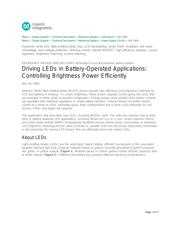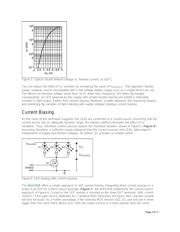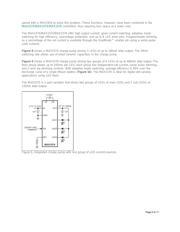下载

Maxim > Design Support > Technical Documents > Reference Designs > Automotive > APP 1804
Maxim > Design Support > Technical Documents > Reference Designs > Power-Supply Circuits > APP 1804
Keywords: white LED, light-emitting diode, bias, LCD backlighting, serial, PWM, shutdown, low noise,
overvoltage, over-voltage protection, dimming control, internal MOSFET, high efficiency, displays, current
regulators, brightness matching, current matching
REFERENCE DESIGN 1804 INCLUDES: Tested Circuit Schematic Description
Driving LEDs in Battery-Operated Applications:
Controlling Brightness Power Efficiently
Mar 25, 2003
Abstract: White light-emitting diode (WLED) drivers provide high efficiency and brightness matching for
LCD backlighting in displays. To control brightness, these drivers regulate current going into LEDs that
are arranged in either serial or parallel configuration. Charge pumps drive parallel LEDs whose currents
are regulated with individual regulators or simple ballast resistors. Inductor-based converters deliver
current to a string of LEDs, inherently equal. Both configurations aim to drive LEDs efficiently for cell
phones, PDAs, and digital still cameras.
This application note describes how LEDs, including WLEDs, work. The note also explains how to drive
them in battery-powered LED applications, including lithium-ion (Li+ or Li-ion), nickel-cadmium (NiCd),
and nickel metal-hydride (NiMH) rechargeable handheld devices where power consumption is important.
LED brightness matching and the value of series vs. parallel LEDs are discussed. Application information
is also presented for several LED drivers that can efficiently drive and control LEDs.
About LEDs
Light-emitting diodes (LEDs) are the solid-state, highly reliable, efficient counterparts of the evacuated
tungsten-filament light bulb. Epitaxial material based on gallium arsenide phosphide (GaAsP) produces
red, green, or yellow outputs (Figure 1). Material based on indium gallium nitrate (InGaN) produces blue
or white outputs (Figure 2). Different chemistries also produce different electrical characteristics.
Page 1 of 11








